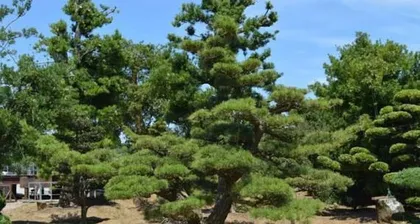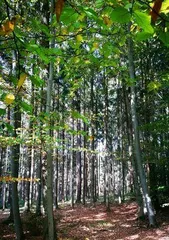Pine trees are one of the economic forest species in northern China and are also important for environmental protection. To ensure pine trees survive the cold winter healthily, scientific winter care is necessary. The following will detail how to carry out winter care for pine trees.

The Importance of Pruning Diseased and Insect-Infested Branches and Leaves
When caring for pine trees in winter, the first step is to prune the diseased and insect-infested branches and leaves. This is an important measure to protect the health of pine trees.
Preventing the Occurrence of Pine Wilt Disease and Powdery Mildew
Pine wilt disease and powdery mildew are common pine tree diseases that can seriously affect the health of pine trees. When caring for pine trees in winter, measures must be taken to prevent their occurrence.

Pay Attention to Irrigation and Drainage
When caring for pine trees in winter, pay attention to irrigation and drainage. Keep the soil moist while avoiding excessive water accumulation to prevent root rot.
Avoid Damaging the Root System
The root system of pine trees is very important. If damaged, it will affect the growth and health of the pine tree. When caring for pine trees in winter, it is important to avoid damaging the root system.
Control the Amount of Fertilizer
The amount of fertilizer for pine trees needs to be controlled within a certain range. Excessive fertilization will lead to poor growth. When caring for pine trees in winter, pay attention to controlling the amount of fertilizer.

Pay Attention to Pine Needle Accumulation
In winter, pine needles tend to accumulate under the pine tree, which can affect its growth and health. Pine needles need to be cleaned up in a timely manner.
Prune Branches in a Timely Manner
The branches of pine trees need to be pruned in a timely manner to maintain a good canopy shape. When caring for pine trees in winter, pay attention to pruning branches in a timely manner.
Avoid Man-made Damage
Man-made damage is a significant threat to the growth and health of pine trees. When caring for pine trees in winter, it is important to avoid man-made damage.
Through the above measures, the health of pine trees can be effectively protected, and their growth can be promoted. At the same time, the ecological environment can be protected, maintaining a harmonious coexistence between humans and nature.
Methods for Pruning Diseased and Insect-Infested Branches and Leaves
Pruning diseased and insect-infested branches and leaves is the first step in caring for pine trees. The specific method is to selectively prune these branches and leaves, being careful not to damage the normal branches and leaves of the pine tree.
Measures for Preventing and Controlling Pine Wilt Disease and Powdery Mildew
Measures for preventing and controlling pine wilt disease and powdery mildew include: selecting healthy seedlings and excellent varieties, promptly adopting chemical and biological control measures, and maintaining the hygiene of the pine tree's growing environment.
Precautions for Irrigation and Drainage
When caring for pine trees in winter, pay attention to irrigation and drainage. Maintain a moderate level of moisture, but do not over-irrigate to avoid affecting root health.
Methods to Avoid Damaging the Root System
Methods to avoid damaging the root system include: avoiding excessive fertilization, avoiding damage to the canopy and roots, and reducing mechanical damage.
Control of Fertilizer Amount
The amount of fertilizer for pine trees needs to be controlled within a certain range. The specific method is to apply fertilizer scientifically and reasonably according to the growth status and environment of the pine tree.
Precautions
When caring for pine trees, it is necessary to pay attention to pruning diseased and insect-infested branches and leaves, preventing and controlling pine wilt disease and powdery mildew, paying attention to irrigation and drainage, avoiding damage to the root system, controlling the amount of fertilizer, and cleaning up pine needles. Through scientific care, the health of pine trees can be protected and their growth and development promoted.